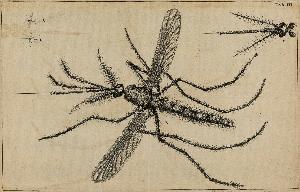Johannes Swammerdam
Johannes Swammerdam;Jan Swammerdam
Place: Amsterdam
Born: 1637
Death: 1680
Biography:
Johannes Swammerdam, also known as Jan Swammerdam, was a Dutch biologist and microscopist born on February 12, 1637, in Amsterdam, Netherlands. He is best known for his work on insects and his contributions to the field of microscopy.
Early Life and Education
Swammerdam's early life and education are not well-documented, but it is believed that he studied medicine at the University of Leiden. His interest in biology and microscopy led him to conduct experiments on muscle contraction and the anatomy of insects.
Career and Contributions
Swammerdam's work on insects demonstrated that the various phases during the life of an insect—egg, larva, pupa, and adult—are different forms of the same animal. This discovery was a significant contribution to the field of biology and helped lay the foundation for modern entomology. As part of his anatomical research, he carried out experiments on muscle contraction, which led to a better understanding of the human body. Swammerdam's work with microscopes also led to the observation and description of red blood cells in 1658, making him one of the first scientists to do so. His techniques remained useful for hundreds of years, and his contributions to the field of microscopy are still recognized today.
Artistic Contributions
Although Swammerdam is not primarily known as an artist, his work has been featured on Wikioo.org, a leading online platform for art reproductions and prints. His contributions to the scientific community have also been recognized by the Rijksmuseum, a museum in Amsterdam that showcases Dutch art and history.
- Swammerdam's work on insects has been featured in various exhibitions, including those at the Natural History Museum in London.
University of Leiden, where he studied medicine. - The Wikioo.org platform features a range of art reproductions, including works by other Dutch artists such as Antonie Van Leeuwenhoek.
contributions to the field of microscopy and biology have been made by Swammerdam, and his work continues to be recognized today. The Wikioo.org platform provides a unique opportunity for art lovers and researchers to explore his work and that of other notable artists. In conclusion, Johannes Swammerdam's contributions to the scientific community are significant, and his work has been recognized by various institutions, including Wikioo.org. His experiments on muscle contraction and his observations of red blood cells have had a lasting impact on our understanding of the human body and the natural world.

